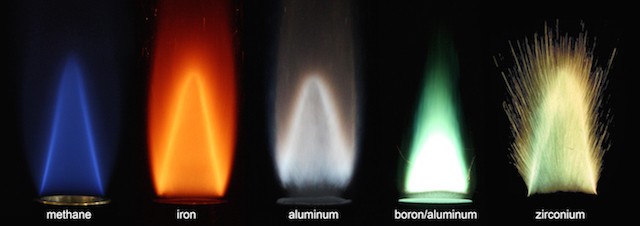Researchers in Canada and Europe believe metal powders could be used as a viable long-term replacement for fossil fuels.
The findings from a team at McGill University and a European Space Agency scientist in the Netherlands are detailed in the journal Applied Energy.

“Technologies to generate clean electricity – primarily solar and wind power – are being developed rapidly; but we can’t use that electricity for many of the things that oil and gas are used for today, such as transportation and global energy trade,” said McGill University professor Jeffrey Bergthorson, lead author of the study.
“Biofuels can be part of the solution, but won’t be able to satisfy all the demand; hydrogen requires big, heavy fuel tanks and is explosive, and batteries are too bulky and don’t store enough energy for many applications,” says Bergthorson, a mechanical engineering professor and Associate Director of the Trottier Institute for Sustainability in Engineering and Design at McGill. “Using metal powders as recyclable fuels that store clean primary energy for later use is a very promising alternative solution.”
The Applied Energy paper lays out a concept for using fine metal particles to power external-combustion engines.
Unlike the internal-combustion engines used in petrol-powered cars, external-combustion engines use heat from an outside source to drive an engine. External-combustion engines, modern versions of the coal-fired steam locomotives that drove the industrial era, are widely used to generate power from nuclear, coal or biomass fuels in power stations.
The idea of burning metal powders is nothing new but relatively little research has been done in recent decades on the properties of metal flames, and the potential for metal powders to be used as a recyclable fuel in a range of applications has been largely overlooked by scientists.
The idea put forward by the McGill team takes advantage of an important property of metal powders: when burned, they react with air to form stable, nontoxic solid-oxide products that can be collected relatively easily for recycling.
Using a custom-built burner, the McGill researchers are said to have demonstrated that a flame can be stabilised in a flow of tiny metal particles suspended in air.
Flames from metal powders appear quite similar to those produced by burning hydrocarbon fuels, the researchers said. “The energy and power densities of the proposed metal-fuelled heat engines are predicted to be close to current fossil-fuelled internal combustion engines, making them an attractive technology for a future low-carbon society.”
Iron could be the primary candidate for this purpose, according to the study. Millions of tons of iron powders are already produced annually for the metallurgy, chemical and electronic industries. And iron is readily recyclable with well-established technologies, and some novel techniques can avoid the carbon dioxide emissions associated with traditional iron production using coal.
While laboratory work at McGill and elsewhere has shown that the use of metal fuels with heat engines is technically feasible, no one has yet demonstrated the idea in practice.
The next step toward turning the lab findings into usable technology, therefore, will be “to build a prototype burner and couple it to a heat engine,” Bergthorson said. “Developing metal recycling processes that don’t involve CO2 emissions is also critical.”




Nanogenerator consumes CO2 to generate electricity
Whoopee, they've solved how to keep a light on but not a lot else.